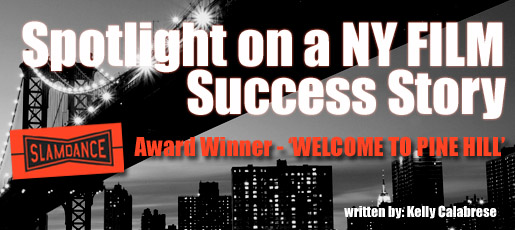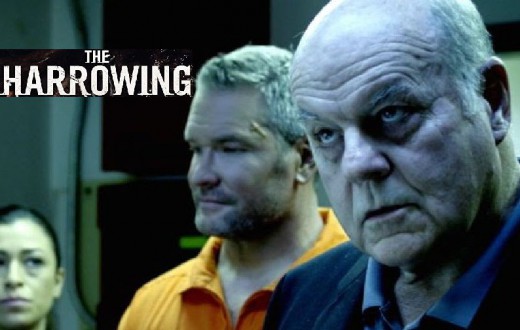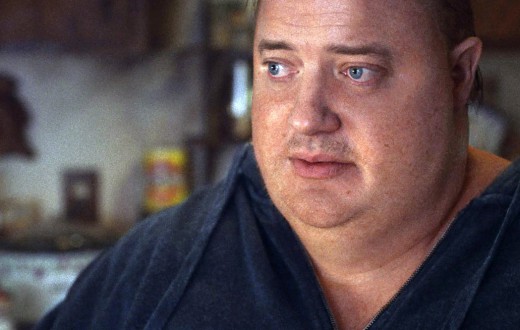About to win the hearts of all actors reading this story, NY’s Writer/Director/Editor Keith Miller just won Slamdance’s Grand Jury Prize for Narrative Feature for his latest film – WELCOME TO PINE HILL.
WELCOME TO PINE HILL began as a short film after filmmaker Keith Miller and star Shannon Harper found themselves arguing over a lost dog one night in Brooklyn. Now a feature, the story delves deeper into the complexity of a reformed man who chooses to not argue with himself over the harsh reality of his own life about to be lost.
Sounds dark! And no doubt this film does yank minds into a vulnerably raw place. Yet in speaking with Keith Miller, I found the opposite.. I found so many illuminating thoughts.
A true actor’s director, Keith Miller nurtures and embraces both truth and talent. Here is the story on his award winning journey…
Q&A with Keith Miller – Writer/Sirector/Editor of WELCOME TO PINE HILL.
Q: Writer/Director/Editor – seriously? How does one juggle that?
Be stupid and poor.
– insert both Keith and Kelly laughing. Then a pause for the full answer –
I’ve always directed and edited my films. I essentially cast as well because I see each as organically related but also autonomous. For every script… I write the script, cast it, shoot the movie and edit.
Q: Do you use casting sites?
Yes, I use casting sites. Some people came to audition for this film through casting sites.
Q: And what are your thoughts about casting sites?
 I have very strong feelings about headshots.
I have very strong feelings about headshots.
For one film I did, I was trying to cast a woman and she sent a photo that was magic. I thought, “That is the face I am looking for.” Then she came in and was beautiful, and 150 pounds heavier. If she had given me the photo of her 150 pounds heavier, I might of still thought to use her because she had a nice presence. But getting a headshot that reflects who you are when you walk in the door, that’s crucial. And if you have a weird look in any way, admit it to yourself. Quirky is good. People send in headshots and they all look like a beautiful young actress, but then they walk in and are plain looking.
Your presentation should not be who you wish you were, but who you are. If you do ‘stoner slacker’ well because you like to smoke weed and hang out – come in as that. If you admit who you are and are true to that, when we see you we will think, “Yes! They are even more of the type we wanted than we thought.”
You can’t fool people into your being something else.
Q: What do you hope actors will realize about the casting process?
For the casting process, I hope all actors realize that the casting process happens long before I do the sides. If I meet someone and get a good feeling about them, I will keep them in mind. And a good feel for an actor can make a part change. I could think, “Oh, I was thinking of this character as a really mean person, but she has a bit of sweetness to her. Yes, sweet and mean. That’s better.”
Letting the actor kind of inform the part is a very big part of it for me. I let the actor inform the part and then when I am shooting I let the situations that are happening inform the idea for the scene. And then when I am editing, I look at what is actually in front of me. I’ll see that I thought the film was going to go one way, but it was meant to go another.
In Pine Hill, the scene with the mother, that was meant to be a little more angry. But the immense amount of distrust she had experienced and the heartbreak that was etched into her nature pushed the scene a certain way. In the moment, their interactions were informing the scene in a much deeper way than I thought of originally.
For me, being informed by the realities on the ground is how I do it. So to have someone else edit would be weird because a lot of it is decided by my reactions. Another editor would be able to edit the movie, but they wouldn’t edit this movie.
Q: You teach at NYU Gallatin School of Individualized Study. What do you teach?
At Gallatin, we create our own classes so I teach theory heavy courses like ‘First Person Present Tense’ that is inspired by this type of experience (the way he filmed Pine Hill). I take real experiences and put it into video, whether it is narrative, documentary or webisodes, where people are engaged in the real world.
Some professors have a specific style and students come out with modified versions of that. My style is based on the students. A lot of times I see a student doing something I would never do and I’m like, “All right, let’s push this further.” I make sure it is what they want to do, not what they think they should do. Just because you can do it, doesn’t mean it is your voice. Make sure you are thinking clearly and honestly.
Q: You sound a lot like an actor’s director, very aware of the individual. Is that true?
 I find the process of acting challenging and I am very protective of my actors on set. Shannon said that he felt totally safe on set. He felt as if he could go anywhere. I try to set up the situation where it feels so real, where you can take risks.
I find the process of acting challenging and I am very protective of my actors on set. Shannon said that he felt totally safe on set. He felt as if he could go anywhere. I try to set up the situation where it feels so real, where you can take risks.
And when it comes to editing, I get upset with editors who make a person look stupid. Everyone says “uh,” but if you leave it in at the wrong time that is just mean. I work hard to make sure that you really go with the characters. Like with the mother (in Pine Hill), I didn’t want anyone to laugh at her. I wanted to make sure that they were with her the whole way. It was important for me to edit and maintain the deep sense of humanity for each character that the entire movie is supposed to have.
I care a lot about the people that I work with. I think as a viewer it is weird if you don’t like someone. Even the complexity of a bad person is interesting, so to limit that complexity, the layers of it, I don’t see why you would do that.
WELL…. I see why WELCOME TO PINE HILL received such a strong response at Slamdance! A huge thank you to Keith Miller for sharing his unique way of thinking about actors and filmmaking.
To learn more about WELCOME TO PINE HILL check out www.welcometopinehill.com







